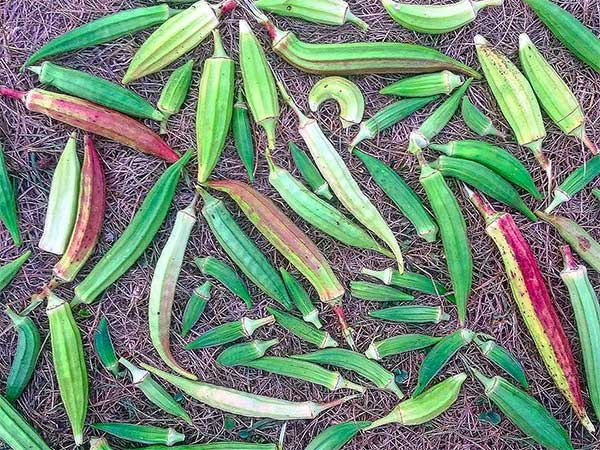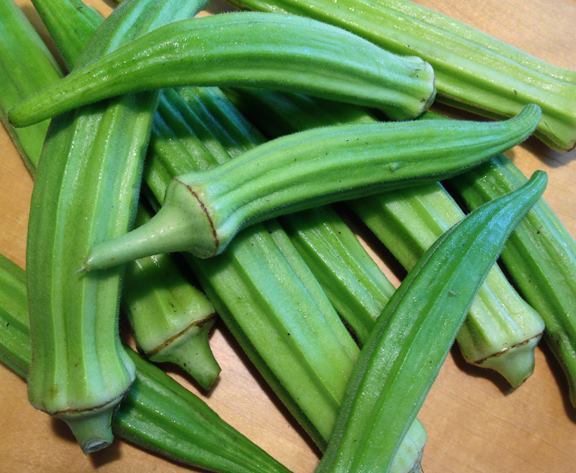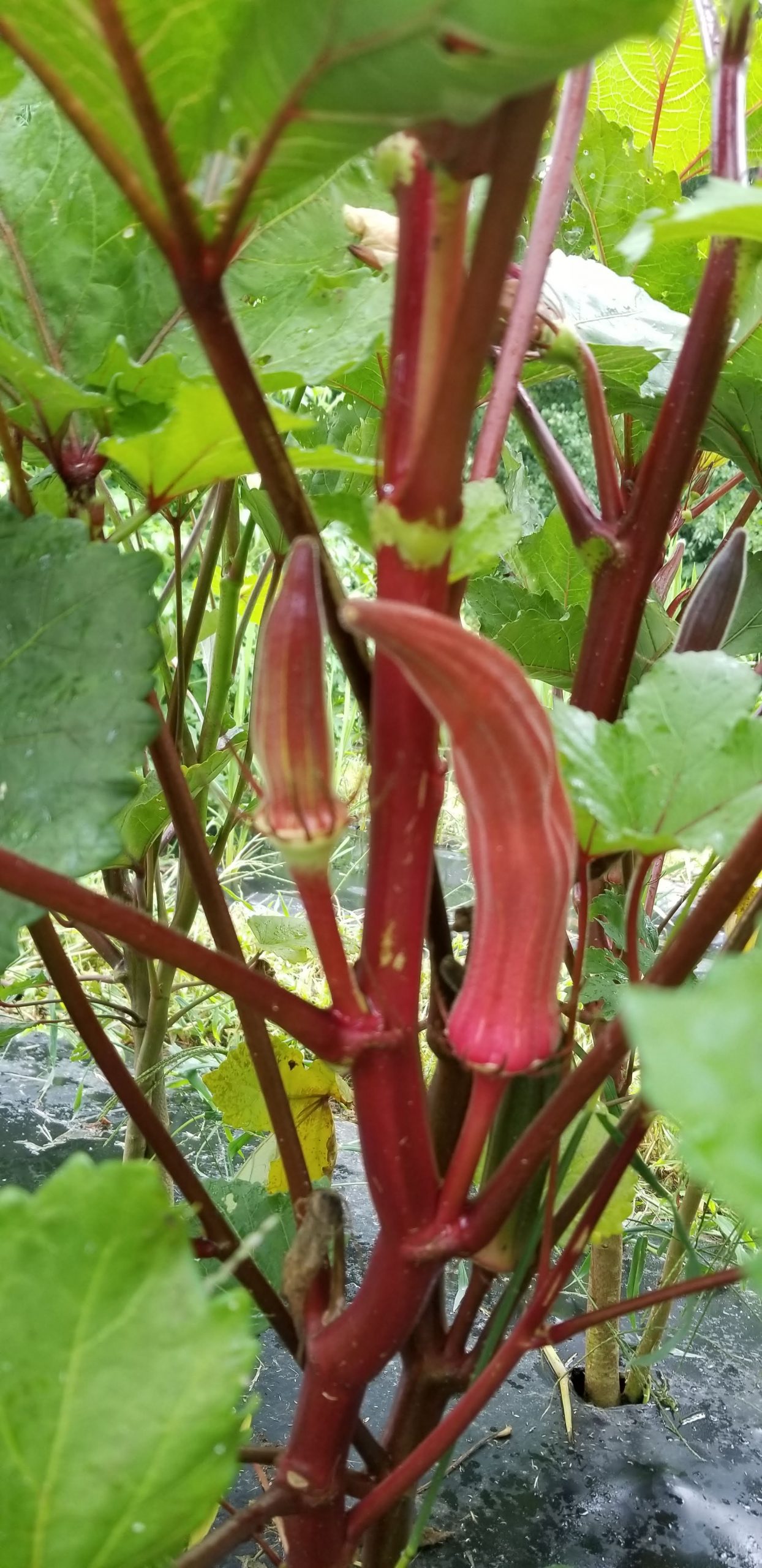
Okra has been one of those plants with which I have a tumultuous growing relationship. I love the look of the plant and have enjoyed it in a few recipes but my success has been uneven. When this happens, I usually assume that there is something yet to learn about the plant. Perhaps a growing technique (often known interestingly as cultural technique, which I like because it connects with the idea of traditions) or maybe something about the plant’s genetic potential that can be adapted through selection to make it easier to grow in Ottawa. Thankfully, for us Ottawa-folk, there are actually quite a few varieties that are adapted to more Northern growing conditions, especially in an area like ours which has a decent amount of heat and sun in the summer. Which leaves cultural (aka growing) techniques to be an area where I can learn. To help, I’ve enlisted Gaia team member Manish. Here’s what he has to say about growing great Okra in the Ottawa (or geographically similar) areas:

“I usually start them early May. They grow fast and can become root bound very easy so you have to transplant in a timely manner or grow in a bigger pot. Even if they are root bound, they will still survive. I have noticed my transplants in smaller pots will stay at the two leaf stage for weeks. Leaves will eventually start yellow and must be transplanted before that stage. Always plant healthy and hardened-off seedlings for best success rate. Plant them way after all warning of frost has passed. Ideally in early June.
Once they are established, growth speeds up. Some early varieties will start producing as early as mid July. Growing a few different varieties make sure you have consistent supply. The more you pick, the more it produces. If you don’t pick, seeds will start to mature in the pods, and the plant will start to produce less fruits. Some varieties will keep producing until the first frost although leaves will start to wither away. You can maximize production by heating the soil with plastic mulch or some other technique.”

“Lady Finger is a commercial variety that was bred for our Northeast Climate. Cajun is also adapted to cooler conditions and is spineless. And Green Emerald is another spineless, popular go-to variety for the Northeast.
Burmese Okra is a huge, spineless plant with long pods and is excellent for pickling.
If you are looking for a smaller variety than try Dwarf Lee. It’s a compact plant that’s good in containers. Dies back sooner in the fall.
Kandahar is a genetically diverse so there’s lot of great variety in shape, size and colour! Good for beginners.”
Some favourite recipes to try as recommended by Manish:
“Okra stir fry are the best. It was my favourite food growing up so that’s where my love of okra come from. Served with rice or rotis: Bhindi Fry Recipe. They also make a Curry out of Bhindi.
There are some Turkish dishes that I’ve also tried. Usually a meat stew with nice texture and savoury flavour: Okra Stew with Meat. It’s also very popular in the Southern US and there are a numerous recipes like these: 40 Okra Recipes. Then there is West African Okra Seafood Stew and Mexican style Okra and Caribbean style Okra to name a few.
I LOVE OKRA!”
Thanks Manish!